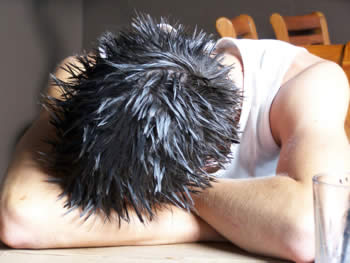Obsessive Compulsive Disorder
Obsessive conditions are far more prevalent than many people realise.
It is possible to provide help for most of them, though, in general, there are no reliable quick-fix methods.
If this page does not contain the information you are searching for, please go to our ‘contact Us’ page to request personal help.
We regret we are unable to advise on medical matters. .
OCD has been linked to increased activity in certain parts of the brain and to a decreased level of the natural chemical serotonin. This chemical is important in the control of mood.
What causes OCD?
The exact cause of OCD is not known, but it is probably due to a combination of factors.
There is some evidence that OCD runs in families – it is often found in people whose relatives have similar anxiety-related disorders, including skin-picking or compulsive hair plucking (trichotillomania).
OCD may also be more common in people who are susceptible to stress or who have experienced a traumatic event in the past. Particular personality types, especially perfectionists are more prone to OCD.
OCD has been linked to increased activity in certain parts of the brain and to a decreased level of the natural chemical serotonin. This chemical is important in the control of mood.
Symptoms
The symptoms of Obsessional Compulsive Disorder (OCD) typically begin during the teenage years or early adulthood. However, it is not unusual for children before the age of 5 to develop the condition. Research shows that at least one-third of cases in adults began in childhood. Only a very small minority of people develop OCD after the age of 35.
Symptoms and behaviours linked with OCD are wide-ranging. A person with OCD has either obsessions, or compulsions, or both.
Obsessions are unpleasant thoughts, images or urges that keep coming into your mind. Some of the common obsessions include:
- Unwanted thoughts, often of a disturbing nature e.g. sexual or violent urges.
- Feeling the need to confess to something.
- Fear of making mistakes or behaving in an inappropriate way.
- Fear about causing harm to other people.
- Needing everything to be perfect.
Compulsions are thoughts or actions that you feel you must do or repeat. Some of the common compulsions include:
- Fear of contamination and germs, leading to cleaning constantly.
- Repeatedly checking things, such as doors and locks.
- Counting, while performing routine tasks.
- Needing to do things a certain number of times or in a certain order.
- Touching or arranging items in careful and neat order.
- Hoarding objects, usually of no value.
- Repeating numbers, words, phrases, prayers or a particular song over and over again, either under your breath or in your mind.
Another, milder, indicator of obsessive compulsive disorder is the need for extreme tidiness and order, in which objects on shelves, in cupboards or on table-tops, for example, must be arranged in a certain way – usually perfectly centered and meticulously placed.
The rituals will typically have no logical purpose. An individual may operate a light switch 7 times before leaving it; rearrange the pillows on the bed 4 times; check each corner of the room twice; pick an object up and put it down several times; arrange things in a certain order, then rearrange them; constantly count the number of roses on the wall paper… in fact he or she might perform absolutely any action a set number of times – and it will always be the same number of times.
Because of all this, a simple task like preparing for bed can take maybe 30 minutes or even longer; leaving the house might involve re-entering several times in order to check locks and windows that have already been checked and indeed may include unlocking and relocking them. Nothing is being sought by these obsessive actions – for the most part, the ‘owner’ of the condition will simply feel, fear, or believe that something awful will happen if these rituals are not completed properly and no amount of logic will persuade him or her that the rituals are unnecessary
Another, milder, indicator of obsessive compulsive disorder is the need for extreme tidiness and order, in which objects on shelves, in cupboards or on table-tops, for example, must be arranged in a certain way – usually perfectly centered and meticulously placed.
It can sometimes be ‘invisible’ to the outside observer, consisting of obsessive thought patterns in which the same thought or series of thoughts is repeated in the mind over and again to the point of causing exhaustion.
The physical symptoms of OCD are very similar to those of a panic attack and include
- sweating
- racing heart
- dizziness
- shortness of breath
- trembling or shaking
OCD is usually treated with a combination of medication combined with talking therapies such as Counselling, NLP, Hypnosis or CBT.








